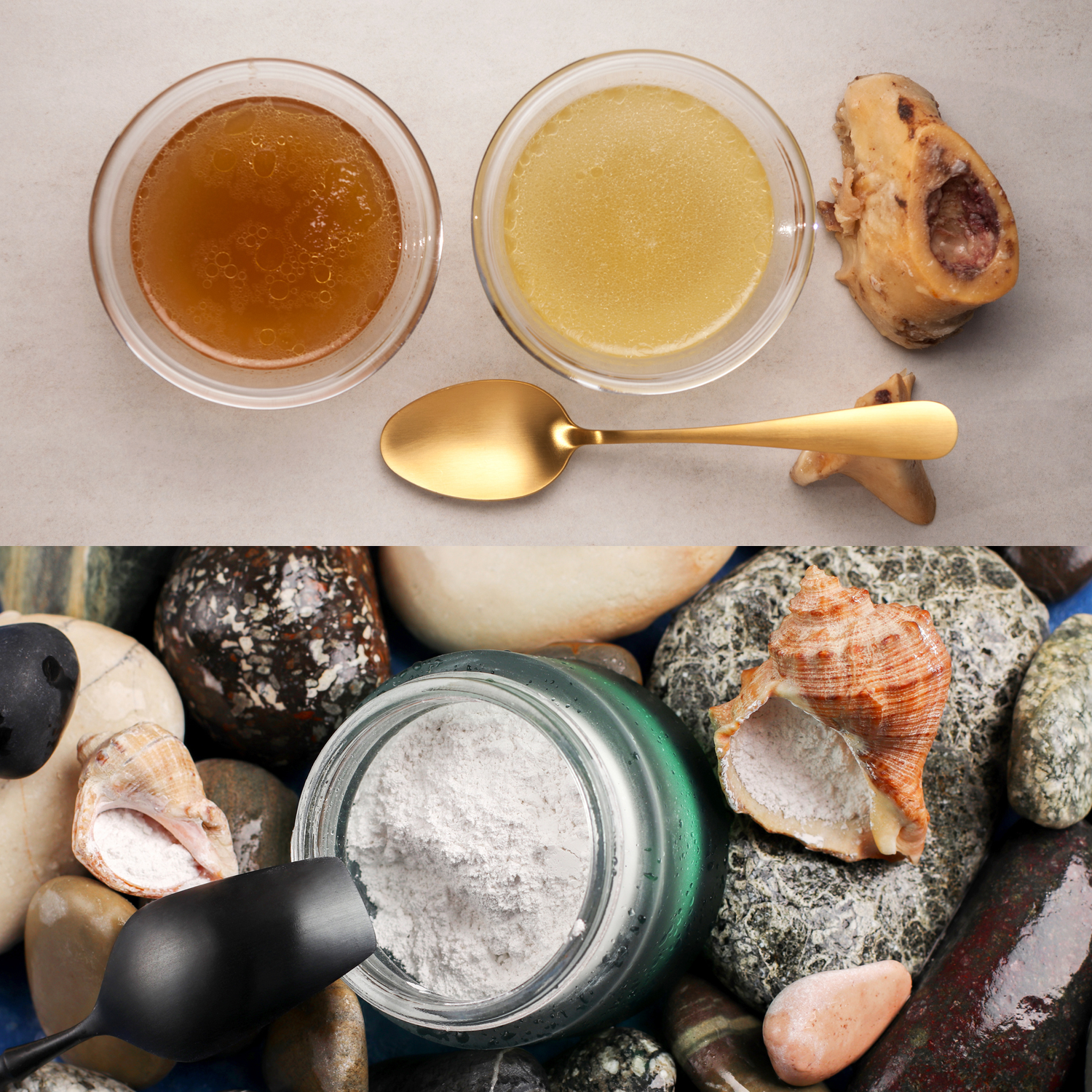Where Does Your Collagen Come From?
Collagen is a substance that is already present in our bodies, but there comes a time when supplementation of collagen can be beneficial. “Collagen is often called the body’s scaffolding. ‘It’s the glue that holds the body together,’ says New York dermatologist Whitney Bowe, author of The Beauty of Dirty Skin: The Surprising Science of Looking and Feeling Radiant from the Inside Out. She says collagen makes up about 75% of the dry weight of your skin, providing volume that keeps skin looking plump and keeps lines at bay. It’s also rich in in the amino acids proline and glycine, which you need to maintain and repair your tendons, bones, and joints.” However, we naturally start to produce less collagen starting in our mid-twenties, and a poor diet can expedite that process as well. “As we get older, we break it down faster than we can replace it…we begin to lose about 1% of our collagen per year in our mid-20s and lose as much as 30% during the first 5 years of menopause.”[1]
There are over twenty types of collagen in the human body, and the most commonly boosted ones include types I, II, and III. To do so, some of the most popular collagen sources are bovine and marine. Bovine, as implied by the name, is derived from cows. To produce the form you commonly see in products, “cow bones or other cattle byproducts are boiled in water. After the collagen is extracted, it’s dried and powdered to form a supplement.” Bovine collagen is then used in products to help boost collagen types I and III and “the collagen in your skin is primarily made up of types I and III collagen, meaning that bovine collagen may be especially useful for reducing wrinkles, promoting elasticity, and increasing skin moisture.”[2]
Marine, or fish, collagen comes from the skin of fish and has been seen to boost collagen types II and III. This can be a popular options for those who have objections, religious or otherwise, to using bovine collagen, and marine collagen can have a faster absorption rate than bovine collagen. Additionally, some people view marine collagen as a more sustainable option for getting their collagen boost. “The fishing industry often has a lot of unused raw materials from the fish they catch, including the fish skins where marine collagen comes from. So fish collagen offers a more economic and environmentally friendly option for cosmetic companies. Instead of wasting fish skins, companies can use the excess materials to create products.”[3]
Ultimately, there is a collagen solution to fit each person’s need. Whether bovine, marine, or otherwise, collagen supplementation can help support your needs (but be sure to discuss it with your physician before starting any new diet or supplement treatment).
We studied the benefits of these different types of collagen sources and decided to combine them into one convenient and delicious package. It may just be exactly what you’re looking for.
[1] Marshall, Lisa. “Collagen: 'Fountain of Youth' or Edible Hoax?” WebMD, WebMD, 12 Dec. 2019, www.webmd.com/skin-problems-and-treatments/news/20191212/collagen-supplements-what-the-research-shows.
[2] MS, Cheri Bantilan. “Bovine Collagen: Benefits, Forms, and Uses.” Healthline, Healthline Media, 7 Nov. 2019, www.healthline.com/nutrition/bovine-collagen#what-it-is.
[3] Bhargava, Hansa D. “What Is Marine Collagen?” WebMD, WebMD, 17 Mar. 2021, www.webmd.com/beauty/marine-collagen.

